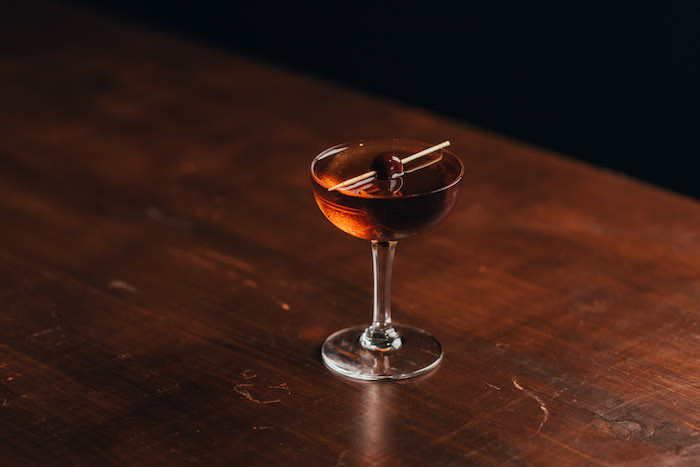
A drink with a colourful, if erroneous, backstory, the Manhattan remains a classic among classics. Clinton Cawood traces its mukey origins.
New York, New York… a city to which we owe an immense debt when it comes to mixed drinks, whose boroughs have given their names to an admirable selection of cocktails. Foremost among these is the Manhattan, a classic of classics, in that very top tier of timeless beverages.
Deceptively simple, like all the best drinks are, this combination of whiskey and sweet vermouth, bitters and maraschino cherry to garnish, is robust and satisfying, bittersweet and complex.
No wonder it’s survived about 150 years’ worth of the proverbial test of time, but that also means its origins aren’t exactly certain. The most prominent theory involves Lady Randolph Churchill, Jennie Jerome – Winston Churchill’s mother. Legend has it that Lady Churchill threw a party at New York’s Manhattan Club in 1874 for presidential candidate Samuel J Tilden, for which Dr Iain Marshall created the drink. Attendees continued to call for it after the event – can you blame them? – using the name of the venue to refer to it.
A wonderful story, but it turns out that Lady Churchill was nowhere near New York at the time, likely in England or France, pregnant with Winston. That doesn’t necessarily discount the rest, but it certainly calls it into question, and leaves it without its most noteworthy cast member.
A competing story dates the drink’s creation to a decade earlier. As recorded in the 1923 Valentine’s Manual Of Old New York, bartender William F Mulhall recounted in the 1880s that the Manhattan was invented in the 1860s by “a man named Black” who ran a bar on Broadway below Houston Street. Mulhall, who worked at New York’s Hoffman House, added that the Manhattan was “probably the most famous drink in the world in its time”.
There are questions about this one too – not least how far back it dates the drink’s invention. What we do know is that the Manhattan began popping up in print from the early 1880s.
The earliest reference is probably in the Sunday Morning Herald in Olean, New York, in 1882, referring to the Manhattan as containing whiskey, vermouth and bitters, but confusing matters with other names for it, such as the Turf Club or Jockey Club. Both are, of course, surviving classics to this day, but bear only a passing resemblance – they’re both gin drinks, for a start.
The Manhattan hasn’t changed significantly from its earliest accounts, but some of its first cocktail-book appearances offer a few curveballs. OH Byron’s 1884 The Modern Bartenders’ Guide contains two variants, one with equal parts whisky and Italian vermouth, the other with a more familiar two-to-one ratio – although that controversially calls for French (dry) vermouth. Meanwhile, the first edition of Charlie Paul’s American and Other Drinks, also published in 1884, unexpectedly calls for Scotch. These and other early versions also variously include the likes of curaçao, gum syrup and absinthe.
The type of whiskey is a consideration (dismissing Paul’s Scotch Manhattan for now – the Rob Roy is a great drink, but a different beast), and many of these early mentions only specify “whisky”. Rye is generally the standard, with bourbon an acceptable alternative. The availability of Canadian whiskey during Prohibition made it a popular choice too.
Beyond being such a damn fine cocktail in its own right, the Manhattan is an ideal base for variations, and there are plenty of good ones, like the aforementioned Rob Roy. That said, those considering swapping sweet for dry vermouth to create a so-called Dry Manhattan might be better off in another New York borough – the Brooklyn crucially adds maraschino liqueur, with Amer Picon in place of Angostura. And I’d argue that the Perfect Manhattan, with both sweet and dry vermouth, is an unnecessary compromise.
Among the most well-known of contemporary riffs is the Black Manhattan, created by Todd Smith during his time at San Francisco’s Bourbon & Branch in 2005. Much like the classic, Smith’s version doesn’t overcomplicate matters, merely swapping out the sweet vermouth for Averna.
“I remember I was pretty obsessed with amaros back then,” says Smith. “I’ve always preferred simple drinks, and thought whiskey would be a good match.”
He’s modest about its enduring popularity. “It surprises me every time someone orders it, but I think it holds up pretty well.”


